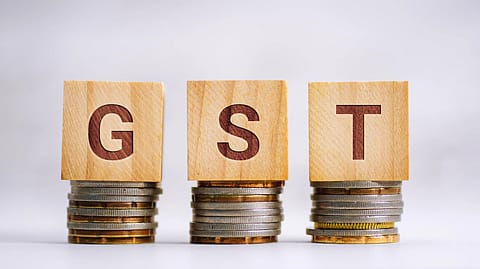GST 2.0 turns the tables as Oct collection up 4.6%, revenue gains defy fears of ₹10-lakh cr loss: SBI Research
There has been a 4.6% increase in GST collections for October 2025, reaching ₹1.96 lakh crore. This growth contradicts earlier predictions of revenue shortfalls due to GST 2.0 rationalisation, with states like Karnataka and Punjab benefiting.

After the GST rate rationalisation in September, several projections warned of massive revenue shortfalls. However, the latest GST figures have trumped such claims, with tax collections rising 4.6% year-on-year to ₹1.96 lakh crore in October 2025, evidence that GST 2.0 has not weakened the tax engine but strengthened it, according to a recent report by SBI Research.
"Defying wild speculations of a great fall postulated by many economic voices, gross GST collections for Oct’25 (actually returns of Sep’25 filed in Oct’25) increased by 4.6% to ₹1.96 lakh crore…. While the gross domestic collection increased by 2% YoY, the gross import revenue for Oct’25 rose by 12.8%...total refund for Oct 25 stands at ₹2,6934 crore, clocking a YoY growth of 39.6%," states the latest SBI report.
It says the e-way bill generated in September 2025 was the highest ever at 13.2 crore, which points toward enhanced ease of business processes.
Also, the strong momentum of GST collections belies not only the near fear of estimated large falls, it refutes the apprehension expressed by states about a perceived decline after GST 2.0.
"For example, Karnataka had estimated a monthly decline of ₹7,083 crore, while West Bengal had estimated a monthly decline of ₹1,667 crore. In reality, gains for Karnataka are 10% (Oct-25 compared to Oct-24), while Punjab has gained around 4% and Telangana’s gain is again 10%....The decline for West Bengal is marginal at 1% while Kerala has witnessed a decline of 2%," the SBI report said citing government data. "Assuming states experience the same gains (and losses) post rationalisation as in October 25, it is projected GST revenue for FY26...overall states should remain net gainers post GST rationalisation."
Notably, during the launch of the GST 2.0 regime, while the government's estimates of likely revenue foregone due to GST rate rationalisation were ₹48,000 crore, many research agencies estimated losses to the tune of ₹10 lakh crore.
SBI report states that evidence from earlier rounds of GST rate changes, such as those in July 2018 and October 2019, suggests that rationalisation does not necessarily weaken revenue but causes a temporary adjustment.
Recommended Stories
However, it adds that though an immediate reduction in rates can cause a short-term dip of around 3-4% month-on-month (roughly ₹5,000 crore, or an annualised ₹60,000 crore), revenues typically rebound with sustained growth of 5-6% per month. "Rationalisation should be seen less as a short-lived stimulus to demand and more as a structural measure that simplifies the tax system, reduces compliance burdens, and enhances voluntary compliance, thereby widening the tax base."